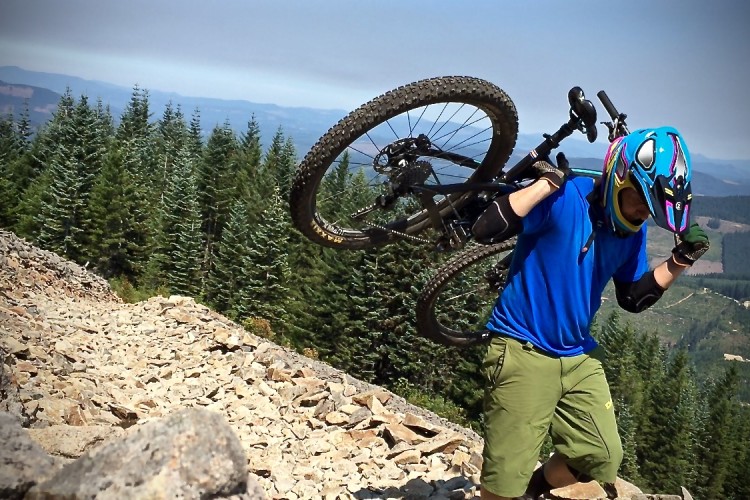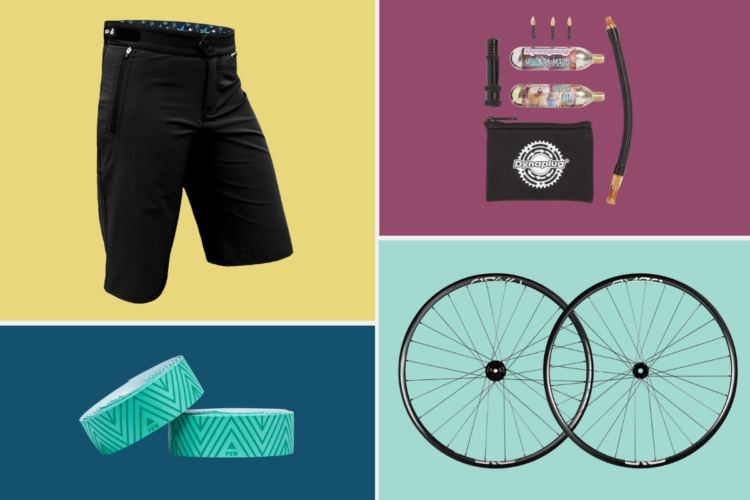Editor’s Note: “Over a Beer” is a regular column written by Greg Heil. While Greg is the Editor in Chief for Singletracks.com, any opinions expressed in this column are his alone and do not necessarily represent the opinions of Singletracks.com.
When I first rode plus tires, I thought they were a gift from the mountain biking gods, sent down to earth with a mission: to rescue us from inferior traction and pinch flats.
[see_also id=’65380′]
But as time went on and I gathered more and more experience on plus-size tires, my rose colored glasses shattered in my hands. Now I’m of the firm opinion that 27.5+ tires are way overrated, and another example of a new product not standing up to the hype used to sell it. Here are 5 reasons why.
1. A Quality Plus Tire Is Too Heavy

Quality plus tires are just too heavy for human-powered mountain biking. It takes too much work to propel that much tire around and around and around again. The limiting factor in mountain bike design is the human body—what can a human being reasonably do? How is the human body shaped? Unless you add a motor to your frame and still try to claim it’s a bicycle, weight will continue to be a critical limiting factor for human-powered transportation.
While some plus tires do offer decent-sized knobs, few bike brands are speccing aggressive treads because they’re just too heavy. The result is that we’re left with tires with relatively low profile knobs—don’t expect to find many plus tires designed for pinning down black diamond trails.
2. Casings and Sidewalls Are Too Light and Flimsy
Since a quality plus tire with all of the durability that we’ve come to expect from respectable mountain bike tires is just too heavy, that has led most tire brands to make their plus tires lighter. However, that means that they sacrifice beefiness on the sidewalls and casings. Result: plus tires aren’t durable
One consequence of flimsy sidewalls is that while the marketing materials say, “you can run lower pressures and get tons of traction,” the reality is that you CAN’T run pressure too low because you will STILL pinch flat–even when running tubeless. And even if you are running high pressures, you can easily tear the light casings on sharp rocks.
3. They Don’t Corner Well
Another result of the light tire casing is that at low pressures, the tires are liable to fold over in the corners. That makes for an unpredictable and generally un-fun cornering experience.
4. Undamped Tire Bounce
If you think, “hey, I can handle a little tire squirm in the corners and I don’t have too many sharp rocks in my trails,” you’ll still be faced with another consequence of running low tire pressure: undamped tire bounce. As anyone who’s spent a lot of time on a fat bike knows, tuning the bounce out of a fat bike tire is an art form and requires the perfect tire pressure for the specific conditions you’re riding. If you’re still trying to achieve “traction” from a low pressure plus tire, you too will be faced with the fat biker’s dilemma of traction VS tire bounce.
5. Plus Tires Don’t Bite in Loose Conditions

If you can’t have big knobs because they weigh too much, and if you’re running higher tire pressures to avoid having the casing deform in corners, pinch flat in the rocks, or bounce in the rough, here is the culmination of all these factors, the number one reason that I can’t stand plus-size tires: they don’t bite in loose conditions. In fact, plus tires tend to slide at the worst possible time.
Common sense would say, “the wider the tire, the better the traction in loose conditions,” but that’s just not the case with plus tires. Due to the relatively low profile knobs and the relatively high pressures, the tires tend to slip and slide on the surface of the loose dirt or scree, because they can’t dig in deep and find purchase.
Traction in loose conditions comes from either digging through the loose dirt to find the hard surface underneath or digging in deep enough that the tire connects with enough soil to provide some semblance of control. If the tire instead grabs the top layer and then pushes that top layer across the rest of the soft soil, the result is a crash for the mountain biker.
But aren’t plus tires good in certain conditions?
The conditions that I have found plus tires to most excel in are hardpack trails with relatively few technical features. But doesn’t every tire hook up well in hardpack conditions?




















